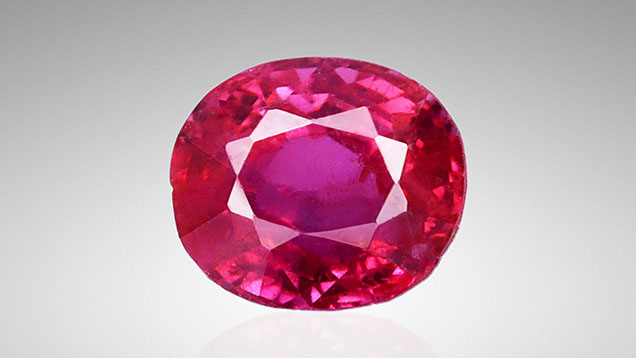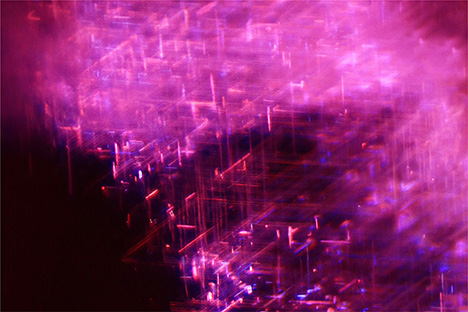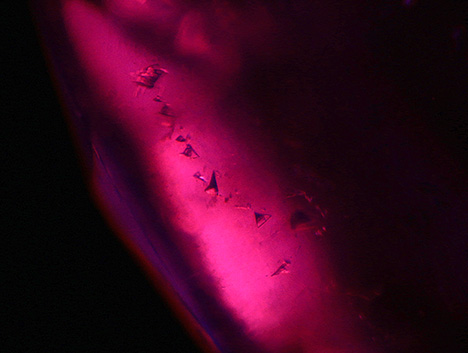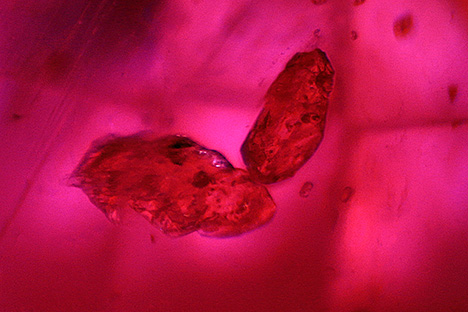Extremely Rare Hellandite Inclusion Found in a Mogok Ruby

Recently, Guild Gem Laboratories (Shenzhen) received a 0.45 ct ruby (figure 1) for origin determination. Standard gemological testing, including a refractive index of 1.762–1.770 and specific gravity of approximately 4.00, and Fourier-transform infrared spectroscopy confirmed its identity as corundum. Additionally, energy-dispersive X-ray fluorescence revealed extremely low iron (247 ppmw) and relatively high chromium (3819 ppmw) and vanadium (448 ppmw) concentrations, consistent with those in marble-hosted samples.



Microscopic observation showed a typical inclusion scene for Burmese ruby from Mogok, including nested concentrations of fine, long to short rutile needles (figure 2) and irregular calcite crystals (figure 3). To our surprise, two transparent brownish crystals (figure 4) were observed. Their slightly corroded state indicated these crystal inclusions’ protogenetic origin. Micro-Raman spectroscopy using 473 nm laser excitation produced some interesting results. Raman analysis showed several distinct peaks at 207, 238, 298, 317, 349, 423, 475, 574, 793, 868, 987, and 1018 cm–1, consistent with those of hellandite according to the RRUFF database (figure 5; see B. Lafuente et al., 2015, https://rruff.info/about/downloads/HMC1-30.pdf). These hellandite inclusions are rarely observed in ruby from any origin.

Hellandite, a rare borosilicate mineral with the proposed ideal formula of (Ca, REE)4(Y, Ce)2Al2(B4Si4O22)(OH)2, comes in various colors, including colorless, brown, brownish red, gray, green, and yellow. First found in granitic pegmatite in Norway, hellandite belongs to the monoclinic crystal system. Its crystal structure was determined on a specimen from Predazzo, Italy, and described as B4Si4O22 chains parallel to the c-axis (M. Mellini and S. Mellini, “Hellandite: A new type of silicoborate chain,” American Mineralogist, Vol. 62, No. 1-2, 1977, pp. 89–99).
Myanmar’s ruby deposits occur in marbles intercalated with gneisses that are sometimes intruded by granitoids (G. Giuliani and L.A. Groat, “Geology of corundum and emerald gem deposits: A review,” Winter 2019 G&G, pp. 464–489). Therefore, we speculate that hellandite crystals in the granitoids intruding gneiss were captured by ruby when the ruby formed.
To our knowledge, this is the first time hellandite has been observed in ruby. This finding allows for a better understanding of included minerals in the ruby from the geological setting of the Mogok mine.
.jpg)


